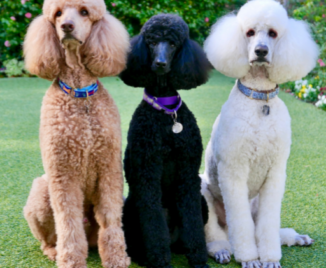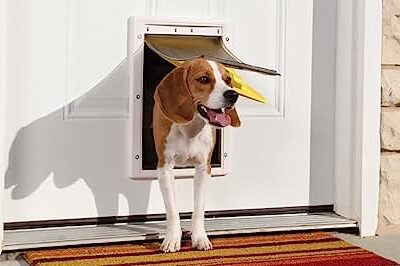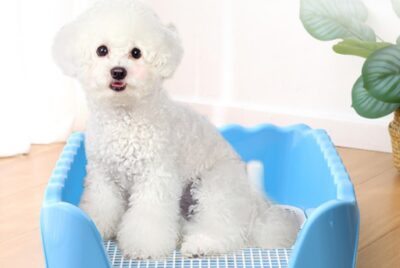The Benefits of a Dog Treadmill: Enhancing Your Dog’s Health and Happiness
Note: Please remember that consulting with a veterinarian is crucial before introducing any new exercise routine or equipment to your dog.
Introduction
As a passionate dog owner and enthusiast, I have always strived to provide my furry companions with the best care possible. One tool that has greatly improved the well-being of my dogs is a dog treadmill. In this article, I will share valuable insights into the benefits of incorporating a dog treadmill into your furry friend’s exercise routine. I will also provide helpful suggestions on choosing the right treadmill, introducing your dog to this new equipment, and establishing a successful treadmill routine.
2. Understanding the Benefits of a Dog Treadmill
2.1. Physical Exercise for Dogs
Just like humans, dogs require regular physical exercise to maintain a healthy weight, strengthen their muscles, and improve cardiovascular health. However, busy schedules, unfavorable weather conditions, or limited access to open spaces can make it challenging to provide adequate exercise for our canine companions. A dog treadmill offers an excellent solution by allowing your furry friend to engage in physical activity regardless of the time of day or weather conditions outside.
2.2. Weather Conditions and Safety
Certain climates can be unforgiving, making it uncomfortable or even unsafe for your dog to exercise outdoors. Extreme heat, cold, rain, or snow can limit the opportunities for outdoor play. With a dog treadmill, you can ensure that your canine companion gets their much-needed exercise without exposure to extreme weather conditions, reducing the risk of overheating or hypothermia.
2.3. Convenience and Time Efficiency
Modern lifestyles often leave us with limited time for leisurely activities, including exercising our dogs. A dog treadmill provides convenience and time efficiency by eliminating the need for long walks or trips to the park. With a treadmill at home, you can easily incorporate exercise into your dog’s daily routine, regardless of your own busy schedule.
2.4. Rehabilitation and Physical Therapy
In certain situations, such as post-surgery recovery or physical rehabilitation, a dog treadmill can play a vital role in your pet’s recovery process. Under the guidance of a veterinarian or a certified canine rehabilitation therapist, a treadmill can help your dog rebuild strength, improve coordination, and regain mobility. It provides a controlled environment for targeted exercise while minimizing the risk of re-injury.
3. How to Choose the Right Dog Treadmill
When selecting a dog treadmill, it’s essential to consider several factors to ensure it suits your dog’s needs and provides a safe and enjoyable experience.
3.1. Size and Weight Capacity
Dogs come in various sizes, so it’s crucial to choose a treadmill that accommodates your dog’s dimensions. Consider your dog’s weight and length, ensuring the treadmill’s running surface is long enough for them to stride comfortably. Additionally, check the weight capacity of the treadmill to ensure it can handle your dog’s weight without strain.
3.2. Speed and Incline Options
Different dogs have varying exercise needs and fitness levels. Look for one that offers adjustable speed settings and incline options. This flexibility allows you to tailor the intensity of the exercise to suit your dog’s capabilities, ensuring a gradual progression over time.
3.3. Noise Level and Durability
A quiet treadmill is essential for creating a positive experience for your dog. Noisy machines can cause anxiety or fear in some dogs, making it challenging for them to adapt to the treadmill. Opt for one designed with noise reduction features, ensuring a calm and stress-free environment. Additionally, choose a durable treadmill made with high-quality materials that can withstand the demands of regular use.
3.4. Safety Features
Safety should be a top priority when selecting a dog treadmill. Look for safety features such as side rails or guardrails to prevent accidental falls. One with an emergency stop button allows you to quickly halt the machine if any issues arise. These safety measures provide peace of mind and minimize the risk of accidents or injuries.
4. Introducing Your Dog to the Treadmill
Once you have chosen the right treadmill for your dog, it’s important to introduce them to this new piece of equipment gradually and with positive reinforcement.
4.1. Familiarization and Positive Reinforcement
Start by allowing your dog to explore the treadmill in a calm and relaxed manner. Encourage them to sniff and investigate the machine while providing treats and verbal praise. This familiarization process helps your dog associate the treadmill with positive experiences.
4.2. Slow and Gradual Introduction
After familiarization, introduce your dog to the treadmill while it’s turned off. Let them stand on it and reward them with treats and praise. Repeat this process several times, gradually increasing the duration of their time on the treadmill. This step-by-step approach helps your dog feel more comfortable and confident.
4.3. Patience and Persistence
Every dog is different, and some may take longer to adjust to the treadmill than others. Be patient and persistent throughout the training process. If your dog shows signs of stress or fear, take a step back and go at their pace. It’s important not to rush the introduction and ensure a positive association with the treadmill.
5. Setting Up a Treadmill Routine for Your Dog
Establishing a treadmill routine for your dog is crucial for them to reap the benefits of this exercise equipment effectively.
5.1. Frequency and Duration
The frequency and duration of treadmill exercise depend on your dog’s age, breed, and overall health. Consult with your veterinarian to determine the appropriate exercise regimen for your furry friend. Start with shorter sessions, gradually increasing both the time and intensity as your dog’s fitness level improves.
5.2. Warm-up and Cool-down
Similar to humans, dogs also require a warm-up and cool-down period before and after exercise. Begin each treadmill session with a gentle warm-up, allowing your dog to walk at a slower pace for a few minutes. After the exercise session, gradually decrease the speed and let your dog walk at a slower pace for a few minutes to cool down.
5.3. Varying Speed and Intensity
To keep your dog engaged and challenged, vary the speed and intensity during treadmill sessions. Incorporate intervals of brisk walks, jogs, and even short sprints to simulate different outdoor exercise experiences. This variety prevents monotony and ensures a more engaging workout for your furry friend.
5.4. Monitoring Your Dog’s Progress
Regularly monitor your dog’s progress during treadmill sessions. Observe their posture, breathing rate, and overall behavior. If you notice any signs of exhaustion, discomfort, or abnormal behavior, pause the session and consult with your veterinarian. Monitoring your dog’s progress helps you tailor their treadmill routine for maximum effectiveness and safety.
6. Additional Tips for a Successful Dog Treadmill Experience
In addition to the core aspects mentioned above, here are some extra tips to enhance your dog’s treadmill experience:
6.1. Supervision and Monitoring
Always supervise your dog while they are using the treadmill. This allows you to ensure their safety and intervene if any issues arise. Additionally, monitoring your dog’s form and behavior during the exercise session helps you make adjustments and provide guidance if needed.
6.2. Proper Maintenance and Cleaning
Keep your dog’s treadmill in optimal condition by following the manufacturer’s maintenance guidelines. Regularly clean the treadmill to remove hair, dirt, and debris. Lubricate the machine as recommended to maintain smooth and quiet operation.
6.3. Combining Treadmill Exercise with Outdoor Activities
A dog treadmill should complement, not replace, outdoor activities. Dogs still need the mental stimulation and socialization that outdoor walks and playtime provide. Incorporate regular outdoor activities into your dog’s routine to ensure a well-rounded exercise regimen.
Conclusion
A dog treadmill can be a valuable addition to your canine companion’s life, providing numerous benefits ranging from physical exercise to rehabilitation opportunities. By carefully choosing the right treadmill, introducing it gradually, and establishing a well-planned exercise routine, you can enhance your dog’s health, happiness, and overall well-being.
FAQs
- Can all dogs use a treadmill?
Yes, most dogs can use one. However, it’s important to consider your dog’s individual health, age, and physical condition. Consult with your veterinarian before starting a treadmill exercise routine. - Is a dog treadmill suitable for all sizes of dogs?
Dog treadmills are available in various sizes, so you can find one suitable for small to large breeds. Ensure you choose one that accommodates your dog’s size and weight capacity. - How long should a dog treadmill session last?
The duration of a session depends on your dog’s fitness level and overall health. Start with shorter sessions of 10-15 minutes and gradually increase the time as your dog becomes more comfortable and fit. - Can I leave my dog unattended on the treadmill?
It’s not recommended to leave your dog unattended on the treadmill. Always supervise your dog during exercise sessions to ensure their safety and well-being. - Can a dog treadmill replace outdoor walks?
It should be seen as a supplement to outdoor walks and playtime. Dogs still require mental stimulation, fresh air, and socialization that outdoor activities provide. Incorporate a combination of treadmill exercise and outdoor activities for a balanced routine.




